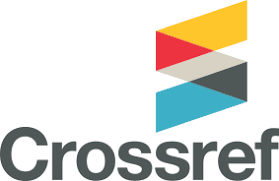Deep Learning Implementation Using CNN to Classify Bali God Sculpture Pictures
Abstract
Efforts to preserve Balinese culture can be carried out by integrating art and technology as new steps that need to be developed. This research is motivated by the existence of various forms of God statues which have a central role in Balinese culture. The Deep Learning method is proposed because it has unique features that can be extracted automatically. The technique used in Deep Learning is Convolutional Neural Network (CNN). The training process is first performed to perform the classification process, and then the testing process is performed. We compared our CNN model with two other models, AlexNet and ResNet, based on the experimental results. Using a data split of 70%- 30%, our CNN model has the highest accuracy in managing statue image data. Specifically, our model achieves 97.14% accuracy, while Alexnet and Resnet achieve 24.44% and 33.33%, respectively. Apart from contributing to introducing the Balinese God Statue, this research can also be a basis for developing more comprehensive applications in culture and tourism.
Downloads
References
[2] A. P. Wibawa, W. A. Yudha Pratama, A. N. Handayani, and A. Ghosh, “Convolutional Neural Network (CNN) to determine the character of wayang kulit,” International Journal of Visual and Performing Arts, vol. 3, no. 1, pp. 1–8, Jun. 2021, doi: 10.31763/viperarts.v3i1.373.
[3] W. M. Salama and M. H. Aly, “Deep learning in mammography images segmentation and classification: Automated CNN approach,” Alexandria Engineering Journal, vol. 60, no. 5, pp. 4701–4709, Oct. 2021, doi: 10.1016/j.aej.2021.03.048.
[4] L. Falaschetti, L. Manoni, D. Di Leo, D. Pau, V. Tomaselli, and C. Turchetti, “A CNN-based image detector for plant leaf diseases classification,” 2022, doi: 10.17605/OSF.IO/UCM8D.
[5] M. T. Ahad, Y. Li, B. Song, and T. Bhuiyan, “Comparison of CNN-based deep learning architectures for rice diseases classification,” Artificial Intelligence in Agriculture, vol. 9, pp. 22–35, Sep. 2023, doi: 10.1016/j.aiia.2023.07.001.
[6] I. U. Haq, H. Ali, H. Y. Wang, C. Lei, and H. Ali, “Feature fusion and Ensemble learning-based CNN model for mammographic image classification,” Journal of King Saud University - Computer and Information Sciences, vol. 34, no. 6, pp. 3310–3318, Jun. 2022, doi: 10.1016/j.jksuci.2022.03.023.
[7] I. P. B. G. Prasetyo Raharja, I. M. Suwija Putra, and T. Le, “Kekarangan Balinese Carving Classification Using Gabor Convolutional Neural Network,” Lontar Komputer : Jurnal Ilmiah Teknologi Informasi, vol. 13, no. 1, p. 1, 2022, doi: 10.24843/lkjiti.2022.v13.i01.p01.
[8] Akshath Rao, Sindhu C, Abrar Suhail, Aayush Mehta, and Saksham Dube, “Panchadeva: Sculpture Image Classification using CNN-SVM,” Journal of Population Therapeutics and Clinical Pharmacology, vol. 30, no. 9, Jan. 2023, doi: 10.47750/jptcp.2023.30.09.034.
[9] Z. Yang, “Interoperability Analysis between Traditional Chinese Sculpture and Painting Modeling from the Perspective of Big Data Management,” Mathematical Problems in Engineering, vol. 2022, 2022, doi: 10.1155/2022/3237282.
[10] T. Yu et al., “Artificial Intelligence for Dunhuang Cultural Heritage Protection: The Project and the Dataset,” International Journal of Computer Vision, 2022, doi: 10.1007/s11263-022-01665-x.
[11] A. Dalara, C. Sindhu, and R. Vasanth, “Entity Recognition in Indian Sculpture using CLAHE and machine learning,” in 2022 1st International Conference on Electrical, Electronics, Information and Communication Technologies, ICEEICT 2022, Institute of Electrical and Electronics Engineers Inc., 2022. doi: 10.1109/ICEEICT53079.2022.9768565.
[12] N. Dowlut and B. Gobin-Rahimbux, “Forecasting resort hotel tourism demand using deep learning techniques – A systematic literature review,” Heliyon, vol. 9, no. 7, p. e18385, 2023, doi: 10.1016/j.heliyon.2023.e18385.
[13] D. Hyun, G. Ali, J. Kim, K. Kim, and K. Yoon, “Real-time X-ray analytical micro-furnace technique for in situ phase formation analysis during material synthesis,” Energy Storage Mater, vol. 59, no. March, p. 102766, 2023, doi: 10.1016/j.ensm.2023.04.005.
[14] G. Ariunzaya, J. C. L. Kavalan, and S. Chung, “Identification of seed coat sculptures using deep learning,” Journal of Asia-Pacific Biodiversity, vol. 16, no. 2, pp. 234–245, Jun. 2023, doi: 10.1016/j.japb.2022.11.006.
[15] K. Budiarta, D. M. Wiharta, and K. Oka Saputra, “Balinese Mask Characters Classification using Bag of Visual Words Model,” Oct. 2021, doi: 10.21512/humaniora.v7i4.3596.
[16] W. Qi, “Object detection in high resolution optical image based on deep learning technique,” Natural Hazards Research, vol. 2, no. 4, pp. 384–392, Dec. 2022, doi: 10.1016/j.nhres.2022.10.002.
[17] Marie Feslová et al., “An unique dataset for Christian sacral objects identification,” 2023, doi: 10.5281/zenodo.7653605.
[18] G. Castellano and G. Vessio, “Deep learning approaches to pattern extraction and recognition in paintings and drawings: an overview,” Neural Computing and Applications, vol. 33, no. 19. Springer Science and Business Media Deutschland GmbH, pp. 12263–12282, Oct. 01, 2021. doi: 10.1007/s00521-021-05893-z.
[19] G. Pant, D. P. Yadav, and A. Gaur, “ResNeXt convolution neural network topology-based deep learning model for identification and classification of Pediastrum,” Algal Research, vol. 48, Jun. 2020, doi: 10.1016/j.algal.2020.101932.
[20] S. Saponara and A. Elhanashi, “Impact of Image Resizing on Deep Learning Detectors for Training Time and Model Performance,” 2022. [Online]. Available: https://link.springer.com/bookseries/7818
[21] D. Danon, M. Arar, D. Cohen-Or, and A. Shamir, “Image resizing by reconstruction from deep features,” Computational Visual Media (Beijing), vol. 7, no. 4, pp. 453–466, Dec. 2021, doi: 10.1007/s41095-021-0216-x.
[22] E. W. Prasetyo, N. Hidetaka, D. A. Prasetya, W. Dirgantara, and H. F. Windi, “Spatial Based Deep Learning Autonomous Wheel Robot Using CNN,” Lontar Komputer : Jurnal Ilmiah Teknologi Informasi, vol. 11, no. 3, p. 167, 2020, doi: 10.24843/lkjiti.2020.v11.i03.p05.

This work is licensed under a Creative Commons Attribution 4.0 International License.
The Authors submitting a manuscript do so on the understanding that if accepted for publication, the copyright of the article shall be assigned to Jurnal Lontar Komputer as the publisher of the journal. Copyright encompasses exclusive rights to reproduce and deliver the article in all forms and media, as well as translations. The reproduction of any part of this journal (printed or online) will be allowed only with written permission from Jurnal Lontar Komputer. The Editorial Board of Jurnal Lontar Komputer makes every effort to ensure that no wrong or misleading data, opinions, or statements be published in the journal.
 This work is licensed under a Creative Commons Attribution 4.0 International License.
This work is licensed under a Creative Commons Attribution 4.0 International License.























